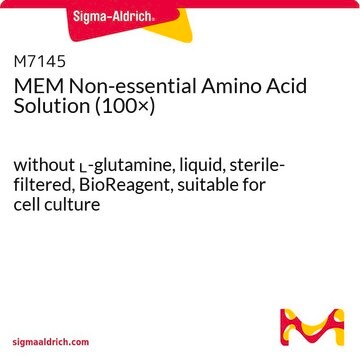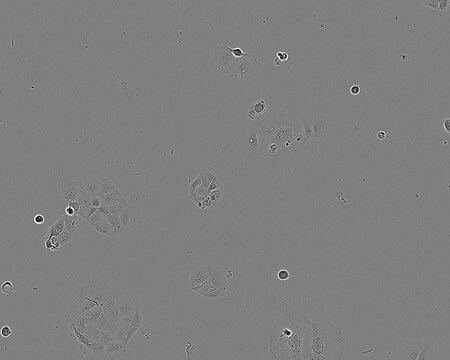MCF7 Cell Line human
86012803, human breast (adenocarcinoma), Epithelial-like
Synonym(s):
IBMF-7 Cells, MCF7 Cells, Michigan Cancer Foundation-7 Cells, ssMCF-7 Cells
About This Item
Recommended Products
Product Name
MCF7 Cell Line human, from human breast(adenocarcinoma), 86012803
biological source
human breast (adenocarcinoma)
growth mode
Adherent
karyotype
2n = 46, hypertriploid to hypotetraploid
morphology
Epithelial-like
products
Not specified
receptors
Reported to express the oestrogen and progesterone receptor
technique(s)
cell culture | mammalian: suitable
relevant disease(s)
cancer
shipped in
dry ice
storage temp.
−196°C
Cell Line Origin
Cell Line Description
Application
DNA Profile
Amelogenin: X
CSF1PO: 10
D13S317: 11
D16S539: 11,12
D5S818: 11,12
D7S820: 8,9
THO1: 6
TPOX: 9,12
vWA: 14,15
Culture Medium
Subculture Routine
Other Notes
related product
Choose from one of the most recent versions:
Certificates of Analysis (COA)
It looks like we've run into a problem, but you can still download Certificates of Analysis from our Documents section.
If you need assistance, please contact Customer Support.
Already Own This Product?
Find documentation for the products that you have recently purchased in the Document Library.
Articles
Learn about the similarities and differences in spheroid formation, roundness, and circularity between Millicell® ultra-low attachment plates and other ULA plates.
Learn how to quantify spheroid formation, roundness, and circularity. Discover Millicell® Ultra-low Attachment plates, an ideal 3D cell culture model for uniform spheroid formation.
Related Content
Millicell® Ultra-low Attachment plates facilitate 3D cell culture with detailed application information for cell seeding to analysis.
Our team of scientists has experience in all areas of research including Life Science, Material Science, Chemical Synthesis, Chromatography, Analytical and many others.
Contact Technical Service







